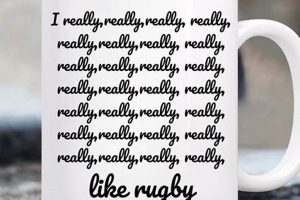Rugby league and rugby union are two popular team sports that share a common origin but have developed into distinct games with their own unique rules and characteristics.
Editor’s Note:Understanding the differences between rugby league and rugby union is important for fans, players, and anyone interested in the sport. This guide will provide a comprehensive overview of the key differences between the two codes of rugby, helping you to better understand and appreciate the game.
To help you understand the differences between rugby league and rugby union, we’ve put together this guide. We’ll cover the key differences between the two sports, including the number of players, the shape of the ball, and the rules of the game.
Key Differences
| Characteristic | Rugby League | Rugby Union |
|---|---|---|
| Number of players | 13 players per team | 15 players per team |
| Shape of the ball | Oval-shaped ball | Egg-shaped ball |
| Rules of the game | Players can tackle opponents with the ball for six tackles before they must release the ball. | Players can tackle opponents with the ball at any time. |
Main Article Topics
In addition to the key differences listed above, there are a number of other factors that distinguish rugby league from rugby union. These include:
- The size of the field
- The length of the game
- The scoring system
- The popularity of the sport
Rugby league is generally played on a smaller field than rugby union, and the games are shorter. Rugby league also has a different scoring system, with tries worth four points and goals worth two points. Rugby union is more popular in the Northern Hemisphere, while rugby league is more popular in the Southern Hemisphere.
Conclusion
Rugby league and rugby union are two great sports with their own unique. If you’re interested in learning more about either sport, there are a number of resources available online and in libraries.
1. Number of players
The number of players on the field is one of the most obvious differences between rugby league and rugby union. Rugby league is played with 13 players per team, while rugby union is played with 15 players per team. This difference in player numbers has a significant impact on the way the game is played.
In rugby league, the smaller number of players means that there is more space on the field for each player. This makes it easier for players to make attacking runs and to create scoring opportunities. In rugby union, the larger number of players means that there is less space on the field for each player. This makes it more difficult for players to make attacking runs and to create scoring opportunities.
The difference in player numbers also affects the way that the game is defended. In rugby league, the smaller number of players means that each player has to cover more ground in defense. This makes it more difficult for teams to defend against attacking runs. In rugby union, the larger number of players means that each player has to cover less ground in defense. This makes it easier for teams to defend against attacking runs.
The difference in player numbers is just one of the many factors that contribute to the different styles of play between rugby league and rugby union. However, it is a significant factor that has a major impact on the way the game is played.
| Rugby League | Rugby Union | |
|---|---|---|
| Number of players | 13 per team | 15 per team |
| Space on the field | More space per player | Less space per player |
| Attacking play | Easier to make attacking runs and create scoring opportunities | More difficult to make attacking runs and create scoring opportunities |
| Defensive play | More difficult to defend against attacking runs | Easier to defend against attacking runs |
2. Shape of the ball
The shape of the ball is one of the most distinctive features of rugby league and rugby union. Rugby league is played with an oval-shaped ball, while rugby union is played with an egg-shaped ball. This difference in shape has a significant impact on the way the game is played.
- Aerodynamics: The oval-shaped ball used in rugby league is more aerodynamic than the egg-shaped ball used in rugby union. This makes it easier to throw and kick the ball long distances.
- Bouncing: The oval-shaped ball used in rugby league bounces more than the egg-shaped ball used in rugby union. This makes it more difficult to control the ball when it is kicked or dropped.
- Gripping: The oval-shaped ball used in rugby league is easier to grip than the egg-shaped ball used in rugby union. This makes it easier for players to hold onto the ball when they are tackled.
- Passing: The oval-shaped ball used in rugby league is easier to pass than the egg-shaped ball used in rugby union. This makes it easier for teams to move the ball around the field.
The difference in the shape of the ball is just one of the many factors that contribute to the different styles of play between rugby league and rugby union. However, it is a significant factor that has a major impact on the way the game is played.
3. Tackling
The difference in tackling rules between rugby league and rugby union is one of the most significant factors that contributes to the different styles of play between the two codes. In rugby league, the six-tackle rule gives the attacking team more time and space to create scoring opportunities. In rugby union, the fact that players can tackle opponents with the ball at any time puts more pressure on the attacking team and makes it more difficult to score points.
- Impact on attacking play: The six-tackle rule in rugby league gives the attacking team more time and space to create scoring opportunities. This is because the defending team has to make six tackles before they can force a turnover. In rugby union, the fact that players can tackle opponents with the ball at any time puts more pressure on the attacking team and makes it more difficult to score points.
- Impact on defensive play: The six-tackle rule in rugby league also has a significant impact on defensive play. Defending te
ams in rugby league have to be more disciplined and organized than defending teams in rugby union. This is because they have to make sure that they don’t give away any easy penalties or turnovers. In rugby union, defending teams can be more aggressive and can put more pressure on the attacking team. - Impact on the overall game: The difference in tackling rules between rugby league and rugby union has a major impact on the overall game. Rugby league is a more open and attacking game than rugby union. This is because the six-tackle rule gives the attacking team more time and space to create scoring opportunities. Rugby union is a more structured and defensive game. This is because the fact that players can tackle opponents with the ball at any time puts more pressure on the attacking team and makes it more difficult to score points.
The difference in tackling rules between rugby league and rugby union is just one of the many factors that contribute to the different styles of play between the two codes. However, it is a significant factor that has a major impact on the way the game is played.
4. Field size
The difference in field size between rugby league and rugby union is one of the most obvious differences between the two codes of rugby. Rugby league is played on a field that is 100 meters long and 68 meters wide, while rugby union is played on a field that is 100 meters long and 70 meters wide. This difference in field size has a number of implications for the way the game is played.
The smaller field size in rugby league means that there is less space for players to run and move the ball. This makes it more difficult for teams to create and execute attacking plays. The smaller field size also means that there is more pressure on players to make tackles and turnovers. This makes the game more physical and demanding.
The larger field size in rugby union gives players more space to run and move the ball. This makes it easier for teams to create and execute attacking plays. The larger field size also means that there is less pressure on players to make tackles and turnovers. This makes the game more open and expansive.
The difference in field size between rugby league and rugby union is one of the many factors that contribute to the different styles of play between the two codes of rugby. Rugby league is a more physical and demanding game, while rugby union is a more open and expansive game.
The table below summarizes the key differences between the field sizes of rugby league and rugby union:
| Rugby League | Rugby Union | |
|---|---|---|
| Length | 100 meters | 100 meters |
| Width | 68 meters | 70 meters |
5. Length of the game
The length of the game is one of the most obvious differences between rugby league and rugby union. Rugby league games are shorter than rugby union games, with a total playing time of 80 minutes compared to 82 minutes for rugby union. This difference in length has a number of implications for the way the game is played.
The shorter game time in rugby league means that there is less time for teams to build up a lead. This makes it more important for teams to start the game strongly and to take their chances when they come. The shorter game time also means that there is more pressure on players to perform at a high level for the entire game. There is less time to rest and recover, so players need to be able to maintain their intensity and focus for the full 80 minutes.
The longer game time in rugby union gives teams more time to build up a lead and to control the tempo of the game. This makes it more important for teams to be patient and to play smart. The longer game time also gives players more time to rest and recover, so they can maintain their intensity and focus for the entire 82 minutes.The difference in the length of the game is one of the many factors that contribute to the different styles of play between rugby league and rugby union. Rugby league is a more fast-paced and attacking game, while rugby union is a more structured and defensive game.
The table below summarizes the key differences between the lengths of rugby league and rugby union games:
| Rugby League | Rugby Union | |
|---|---|---|
| Length | 80 minutes | 82 minutes |
6. Scoring
The difference in scoring between rugby league and rugby union is one of the most significant factors that contributes to the different styles of play between the two codes of rugby. In rugby league, the fact that tries are worth four points and goals are worth two points encourages teams to take more risks and to attack more often. In rugby union, the fact that tries are worth five points and goals are worth three points encourages teams to be more conservative and to play a more structured game.
The higher value of tries in rugby union means that teams are more likely to kick for goal when they are awarded a penalty or when they are close to the opposition’s goal line. This is because kicking for goal is a more reliable way to score points than trying to score a try. The higher value of goals in rugby union also means that teams are more likely to attempt conversions after scoring a try. This is because a successful conversion is worth two points, which is a significant amount of points in a game of rugby union.
The different scoring systems in rugby league and rugby union have a major impact on the way the game is played. Rugby league is a more attacking game, while rugby union is a more structured and defensive game. This is because the different scoring systems encourage teams to play in different ways.
The table below summarizes the key differences between the scoring systems in rugby league and rugby union:
| Rugby League | Rugby Union | |
|---|---|---|
| Tries | 4 points | 5 points |
| Goals | 2 points | 3 points |
7. Popularity
The popularity of rugby league and rugby union in different parts of the world is due to a number of factors, including historical, cultural, and sporting reasons. Rugby league is more popular in the Southern Hemisphere, particularly in Australia, New Zealand, and Papua New Guinea. Rugby union is more popular in the Northern Hemisphere, particularly in England, Wales, Scotland, Ireland, and France.
One of the reasons for the different popularity of rugby league and rugby union in different parts of the world is the way the two sports developed. Rugby league originated in England in the late 19th century, while rugby union originated in England in the early 19th century. Rugby league quickly became popular in the Southern Hemisphere, particularly in Australia and New Zealand, where it was seen as a more exciting and fast-paced game than rugby u
nion. Rugby union remained more popular in the Northern Hemisphere, where it was seen as a more traditional andlike game.
The popularity of rugby league and rugby union in different parts of the world also reflects the different sporting cultures of those regions. In the Southern Hemisphere, rugby league is seen as a more working-class sport, while rugby union is seen as a more middle-class sport. In the Northern Hemisphere, rugby union is seen as the more prestigious sport, while rugby league is seen as a moresport.
The different popularity of rugby league and rugby union in different parts of the world has a number of implications. For example, rugby league is the more popular sport in Australia, so it receives more funding and media coverage than rugby union. This has led to a higher level of competition in rugby league in Australia, and has helped to produce some of the best rugby league players in the world. In contrast, rugby union is the more popular sport in England, so it receives more funding and media coverage than rugby league. This has led to a higher level of competition in rugby union in England, and has helped to produce some of the best rugby union players in the world.
The popularity of rugby league and rugby union in different parts of the world is a complex issue, and there are many factors that have contributed to the different popularity of the two sports in different regions. However, the historical, cultural, and sporting factors discussed in this article provide a good overview of the reasons why rugby league is more popular in the Southern Hemisphere, while rugby union is more popular in the Northern Hemisphere.
| Region | More popular sport | Reasons |
|---|---|---|
| Southern Hemisphere | Rugby league | Historical, cultural, and sporting reasons |
| Northern Hemisphere | Rugby union | Historical, cultural, and sporting reasons |
Frequently Asked Questions about Rugby League versus Rugby Union
Rugby league and rugby union are two popular team sports that share a common origin but have developed into distinct games with their own unique rules and characteristics. Here are answers to some of the most frequently asked questions about rugby league versus rugby union:
Question 1: What is the main difference between rugby league and rugby union?
The main difference between rugby league and rugby union is the number of players on the field. Rugby league is played with 13 players per team, while rugby union is played with 15 players per team. This difference in player numbers has a significant impact on the way the game is played.
Question 2: Which sport is more popular, rugby league or rugby union?
Rugby league is more popular in the Southern Hemisphere, particularly in Australia, New Zealand, and Papua New Guinea. Rugby union is more popular in the Northern Hemisphere, particularly in England, Wales, Scotland, Ireland, and France.
Question 3: Which sport is more physical, rugby league or rugby union?
Both rugby league and rugby union are physical sports, but rugby league is generally considered to be more physical. This is because rugby league players tackle opponents more frequently and with more force than rugby union players.
Question 4: Which sport is more difficult to play, rugby league or rugby union?
The difficulty of rugby league and rugby union depends on the individual player. Some people may find rugby league to be more difficult because of the higher level of physicality, while others may find rugby union to be more difficult because of the more complex rules and tactics.
Question 5: Which sport is more exciting to watch, rugby league or rugby union?
The excitement of rugby league and rugby union is subjective and depends on the individual spectator. Some people may find rugby league to be more exciting because of the faster pace and higher scoring, while others may find rugby union to be more exciting because of the more strategic play and physicality.
Question 6: Which sport is better, rugby league or rugby union?
There is no definitive answer to the question of which sport is better, rugby league or rugby union. Both sports have their own unique strengths and weaknesses, and ultimately the best sport for you will depend on your individual preferences.
We hope this FAQ section has helped to answer some of your questions about rugby league versus rugby union. If you have any further questions, please feel free to contact us.
Transition to the next article section:
Now that we have covered some of the basic differences between rugby league and rugby union, let’s take a closer look at each sport in more detail.
Tips for Enjoying Rugby League or Rugby Union
Rugby league and rugby union are two great sports that can be enjoyed by people of all ages and skill levels. Here are a few tips to help you get the most out of your experience:
Tip 1: Learn the basic rules of the game.
This will help you to understand what is happening on the field and to appreciate the skill and strategy involved in the game.
Tip 2: Find a team to support.
This will give you a sense of community and make the games more exciting to watch.
Tip 3: Attend a game in person.
There is no better way to experience the excitement of rugby league or rugby union than to see a game in person. The atmosphere is electric and the action is thrilling.
Tip 4: Get involved in the sport.
Whether you want to play, coach, or volunteer, there are many ways to get involved in rugby league or rugby union. This is a great way to meet new people, stay active, and learn more about the sport.
Tip 5: Be respectful of the players and referees.
Rugby league and rugby union are physical sports, but they are also games of respect. Be respectful of the players and referees, and help to create a positive environment for everyone involved.
Summary:
By following these tips, you can enhance your enjoyment of rugby league or rugby union. These sports are a great way to stay active, have fun, and learn about teamwork and sportsmanship.
Transition to the article’s conclusion:
We hope this article has helped you to learn more about rugby league and rugby union. These are two great sports that can be enjoyed by people of all ages and skill levels. So get involved, and experience the excitement of rugby league or rugby union for yourself!
Conclusion
Rugby league and rugby union are two distinct yet related sports with unique characteristics and global appeal. Throughout this exploration, we have highlighted their key differences in terms of gameplay, scoring systems, and popularity.
Ultimately, the choice between rugby league and rugby union often comes down to personal preference. Both sports offer an exciting and physical spectacle, fostering camaraderie and sportsmanship. Whether as a player, fan, or simply an admirer of athleticism, embracing the world of rugby league or rugby union promises an enriching and unforgettable experience.







